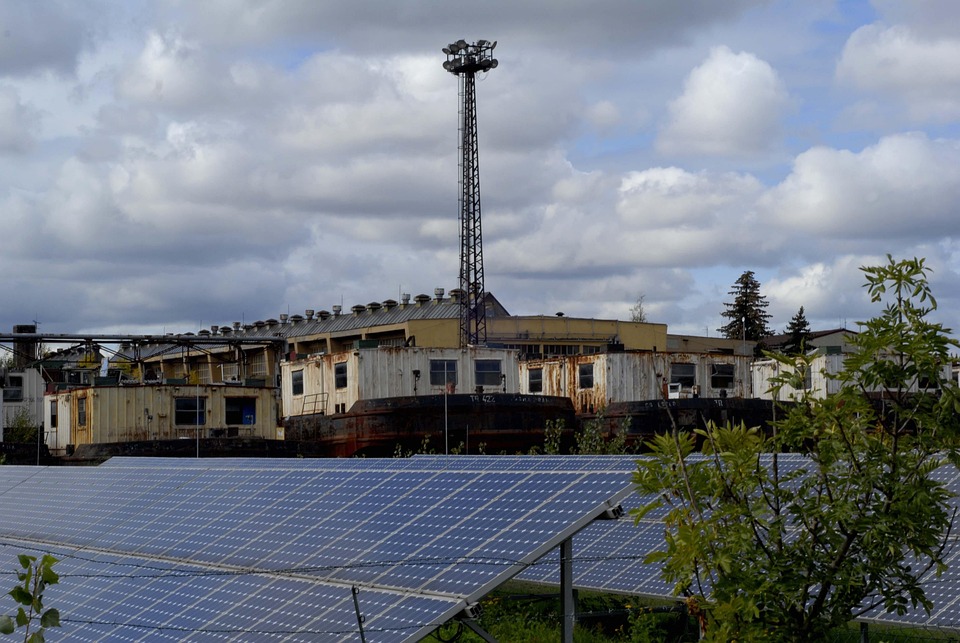**“Harnessing the Sun: A Deep Dive into Solar Technology Advancements”**
### Harnessing the Sun: A Deep Dive into Solar Technology Advancements When I first laid eyes on the picturesque view of the rolling hills bathed in golden sunlight, I knew I had to embrace that radiant energy. Armed with curiosity and a desire for sustainability, I began my journey into the world of solar technology. From the humble beginnings of DIY solar panels to the cutting-edge solar innovations we see today, the advancements in this field have been nothing short of remarkable. Let’s take a joyful leap into the realm of solar energy and explore how harnessing the sun can transform our lives and our planet. #### The Power of the Sun Every day, the sun pours more energy onto Earth than we could ever hope to consume. Imagine—just one hour of sunlight could fulfill our planet’s energy needs for an entire year! Yet despite this abundance, many of us remain tethered to fossil fuels, oblivious to the glowing potential of solar energy. With advancements in technology and growing awareness, it’s time to shine a light on how we can harness this sun-soaked gift for a sustainable future. #### A Brief History of Solar Technology Solar technology isn’t a novel concept; it has roots that stretch back thousands of years. The ancient Greeks used sun-facing homes to maximize natural light, while in the 19th century, French physicist Edmond Becquerel discovered the photovoltaic effect, laying the groundwork for modern solar panels. Fast forward to the 21st century, and we find ourselves at the forefront of a solar revolution, with efficiency and accessibility hitting transformative highs. #### Innovations in Solar Panels Today’s solar panels are a far cry from the bulky, less efficient models of yesteryears. Here’s a breakdown of some groundbreaking advancements: 1. **Bifacial Solar Panels**: These innovative panels can capture sunlight on both sides, increasing energy production by up to 30%. By allowing light to reflect off the ground and hit both sides, they effectively double the output without requiring more space. 2. **Thin-Film Solar Technology**: This lightweight option offers a flexible and versatile alternative to traditional silicon-based panels. Thin-film technology can be integrated into surfaces like windows and building materials, opening up new possibilities for urban energy generation. 3. **Solar Skins**: Aesthetics have historically been a barrier to solar adoption. Enter solar skins—customizable panel wraps that allow homeowners to design their solar array to match their roof. This fusion of functionality and style is setting a trend for more personalized and attractive energy solutions. #### Smart Solar Technology The intersection of solar energy and smart technology is propelling us into a cleaner, more efficient world. Here are some of the latest features that keep you connected to your energy use: 1. **Smart Inverters**: These devices optimize energy production by managing the power flow from solar panels to the grid. They also provide real-time data on energy consumption, helping homeowners to maximize their efficiency and savings. 2. **Under Cloud Optimizers**: No need to fret about cloudy days. Advanced optimizers can track and manage energy output even in less-than-ideal weather, ensuring that your solar system is always operating at peak performance. 3. **Energy Storage**: Battery technology has evolved significantly. With systems like the Tesla Powerwall or LG Chem RESU, users can store excess energy generated during sunny days for use at night or during outages. This capability provides not only independence but peace of mind. #### Beyond Panels: Emerging Technologies Innovation isn’t limited to just solar panels. New technologies are popping up all over the solar landscape, making solar power more accessible and efficient. 1. **Solar Fabric**: Imagine wearing clothes that generate energy! Researchers are experimenting with photovoltaic fibers, allowing fabrics to harness solar power, potentially powering your devices as you move. 2. **Solar Paint**: Yes, you read that right! Researchers are working on paints embedded with solar cells that can turn any surface into an energy-generating entity. It’s an exciting development that could see walls and roofs doubling as energy producers. 3. **Concentrated Solar Power (CSP)**: CSP systems use mirrors to focus sunlight onto a small area, generating heat that powers turbines. It’s an exciting alternative to conventional solar and has huge potential in large-scale installations, particularly in deserts where sunlight is abundant. #### The Future of Solar Technology The future shines bright for solar energy as advancements continue to unfold. Researchers are exploring options like perovskite solar cells, which promise higher efficiency at a lower cost. The scalability of these cells could transform the solar market, making clean energy accessible to all. Moreover, governmental shifts towards clean energy mandates are serving as catalysts for this growth. We’re witnessing a solar boom, with job creation in the green sector and new policies fostering innovation and investment in renewable technologies. #### Pro Tips for Solar Enthusiasts 1. **Understand Your Needs**: Before investing, assess your energy usage and trends. Tools like energy monitors can provide insight into your consumption habits, helping you configure your solar setup for maximum efficiency. 2. **Choose the Right System**: Research different solar technologies and select a system that aligns with your needs. Bifacial panels, thin films, or traditional options have varying advantages depending on your space. 3. **Look for Incentives**: Many governments offer incentives for solar installation, including tax credits and rebates. Research local options and take advantage of available programs to maximize your savings. 4. **Stay Informed**: The solar landscape is always changing. Subscribe to industry newsletters or join local solar communities to keep up with innovations, grants, and best practices. 5. **Regular Maintenance**: Keep your solar system in top shape by ensuring panels are clean and unobstructed. Regularly check for shade from nearby trees or buildings that could diminish efficiency. #### Community and Solar Energy Embracing solar technology can usher in a sense of community. Sharing ideas, information, and even resources can help whole neighborhoods become energy independent. Community solar projects are increasingly popular, pooling resources to build larger systems that benefit many families. By working together, you can not only save money but










